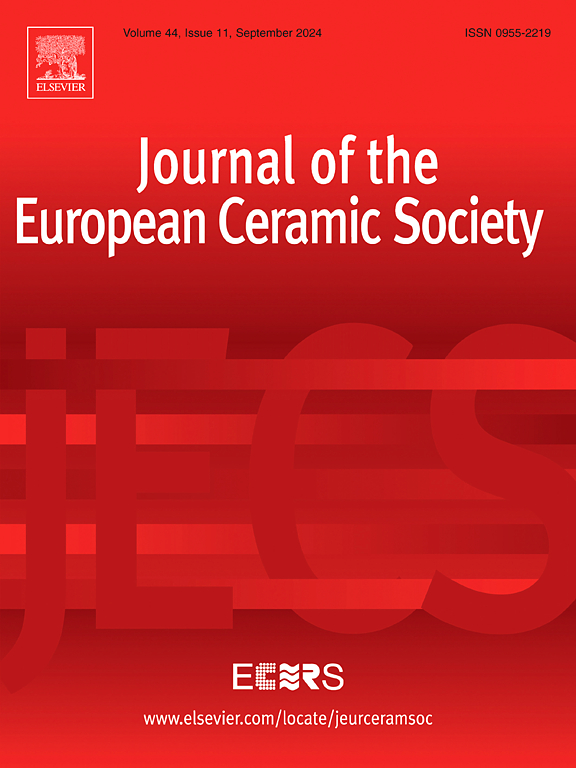Adjustable negative permittivity behavior of high entropy (Ti0.25Zr0.25Nb0.25Ta0.25)C ceramics with different sintering temperatures
IF 5.8
2区 材料科学
Q1 MATERIALS SCIENCE, CERAMICS
Journal of The European Ceramic Society
Pub Date : 2024-12-31
DOI:10.1016/j.jeurceramsoc.2024.117178
引用次数: 0
Abstract
The emergence of high-entropy ceramics has provided a new effective strategy for adjusting the electrical properties of ceramics. Herein, high-entropy (Ti0.25Zr0.25Nb0.25Ta0.25)C ceramics were successfully prepared by the hot-pressure sintering at different sintering temperatures, and the effect of sintering temperature on their composition, conductivity and dielectric properties was investigated. The conductivity of the ceramics showed a decreasing trend with increasing sintering temperature. The ceramics displayed negative permittivity, which arisen from the low-frequency plasma state of free electrons in ceramics. The values of negative permittivity became larger with increasing sintering temperature, which was well analyzed by the Drude model. As the sintering temperature raised, the enhanced lattice distortion could inhibit the movement of free electrons, thereby leading to the reduced conductivity and increased negative permittivity. This study for the first time reported tunable negative permittivity behavior in high entropy ceramics, which is helpful to expand the research scope of high entropy ceramics.
求助全文
约1分钟内获得全文
求助全文
来源期刊

Journal of The European Ceramic Society
工程技术-材料科学:硅酸盐
CiteScore
10.70
自引率
12.30%
发文量
863
审稿时长
35 days
期刊介绍:
The Journal of the European Ceramic Society publishes the results of original research and reviews relating to ceramic materials. Papers of either an experimental or theoretical character will be welcomed on a fully international basis. The emphasis is on novel generic science concerning the relationships between processing, microstructure and properties of polycrystalline ceramics consolidated at high temperature. Papers may relate to any of the conventional categories of ceramic: structural, functional, traditional or composite. The central objective is to sustain a high standard of research quality by means of appropriate reviewing procedures.
 求助内容:
求助内容: 应助结果提醒方式:
应助结果提醒方式:


